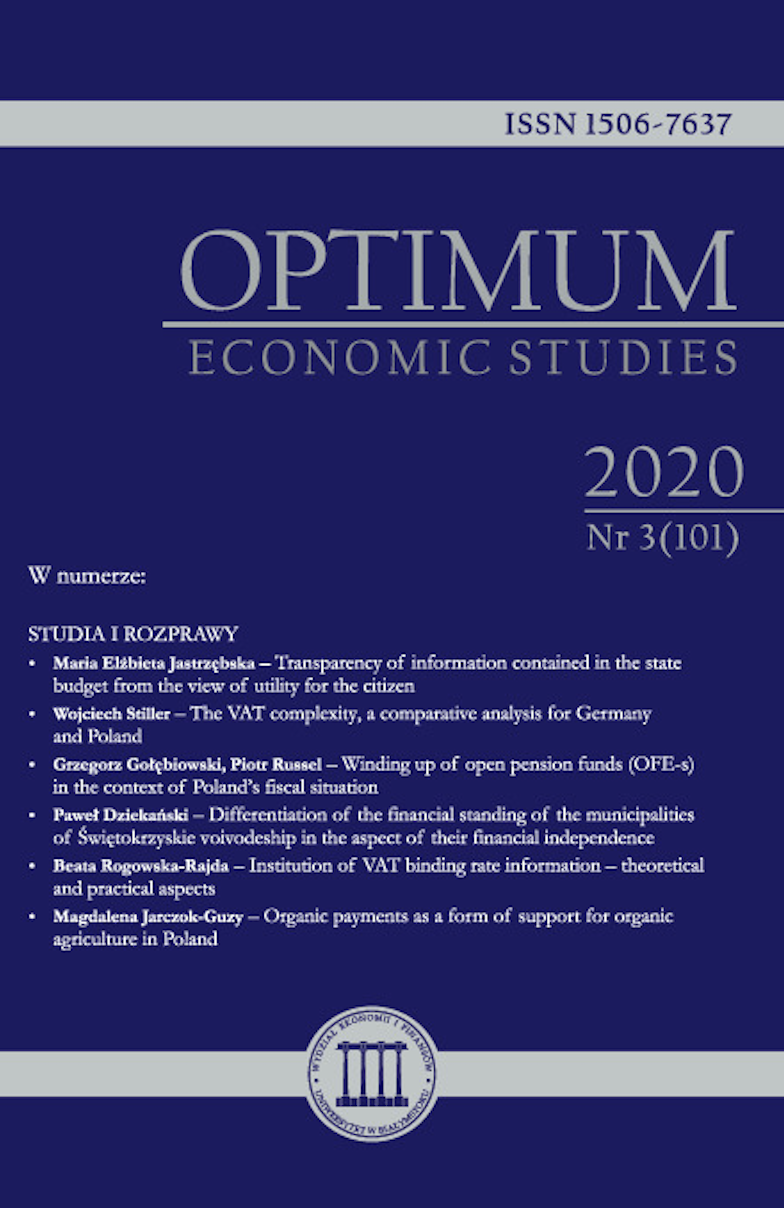Dynamics and determinants of trade exchange between the European Union and India
Dynamics and determinants of trade exchange between the European Union and India
Author(s): Grzegorz BywalecSubject(s): Economy
Published by: Wydawnictwo Uniwersytetu w Białymstoku
Keywords: European Unio; India; trade exchange; economic policy; economic reforms
Summary/Abstract: Purpose – This article attempts to identify and assess trade exchange between the European Union and India, including an indication of the main determinants of the process.Research method – Descriptive analysis based on numerical data from various statistical sources together with a review of specialist literature.Results – Trade exchange between the EU and India is particularly important for India. Exports to the EU account for around 17-20% of Indian exports in total. On the other hand, the EU’s share in Indian imports amounts to 10-12% of all imported goods. Trade with India looks different from the EU side. India’s share in both exports and imports presents a margin for EU trade in goods of 2-3%. The share of services in the trade between the EU and India is high. It accounts for 25-30% of mutual turnover. These are usually modern services based on the offshoring principles, such as IT, business, transport, consulting, science, and tourism. Among the European Union Member States, India’s main trading partners in goods are Germany, the United Kingdom, Belgium, France, the Netherlands, and Italy. These six countries account for ca. 85% of the EU-India trade exchange. In 2007, negotiations started to create an EU-India Free Trade Area. Due to the large differences in the positions of both parties, these discussions were not finalised and were subsequently suspended in 2013. However, after the reactivation of talks in 2016, there is still a possibility for the creation of an EU-India Free Trade Area of 1.8 billion people.Originality /value / implications /recommendations – At the beginning of the 21 st century, in terms of GDP (according to PPP), the European Union (understood as one economic entity) became the second largest economic power globally (after China), while India advanced to fourth position (after China, the EU and the USA). An analysis of trade exchange between these two economic powers allows for a clearer understanding of the modern global economy, as well as the processes and mechanisms of its functioning.
Journal: Optimum. Economic Studies
- Issue Year: 101/2020
- Issue No: 3
- Page Range: 123-139
- Page Count: 17
- Language: English

